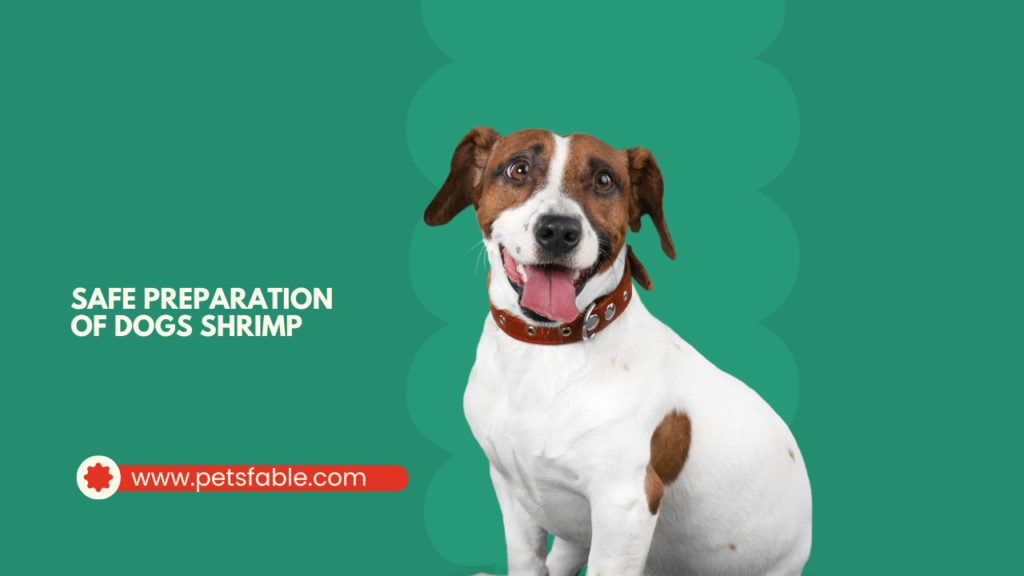Can Dogs Shrimp? (Understanding the Benefits and Risks)
Yes, Dogs Shrimp can safely enjoy shrimp when it is properly prepared. It’s essential to cook the shrimp thoroughly and remove all shells to prevent choking hazards and eliminate the risk of food poisoning from raw seafood.
Shrimp offers a high protein content and is rich in vitamin B12, making it a nutritious snack for dogs when given in moderation. However, ensure the shrimp is plain and free from garlic and onions, as these seasonings are harmful to dogs and can cause toxicity.
Is Shrimp Safe for Dogs?
Did you know that 86% of Dogs Shrimp owners share their meals with their furry friends? If you’re among them, you might question whether shrimp is a suitable choice for your pet.
Shrimp can be beneficial for dogs, but it’s important to be aware of the potential risks and the correct ways to offer it.
This guide will discuss the advantages and drawbacks of feeding Dogs Shrimp, focusing on appropriate portion sizes and preparation methods. By the end of this article, you’ll understand how to safely include this delicious seafood in your dog’s diet.

Is It Safe for Dogs Shrimp?
Feeding Dogs Shrimp hinges significantly on its preparation. This article will explain the proper ways to offer shrimp, whether cooked, fried, or raw, and the impacts of each method on your dog’s health.
Cooked Shrimp: A Healthy Treat
Cooked Dogs Shrimp is the most recommended option for dogs. It’s high in protein yet low in fat, which contributes to a nutritious snack. Additionally, cooked shrimp is easier to digest and less prone to cause gastrointestinal upset in dogs.
Key Considerations for Offering Shrimp to Dogs
- Safety of Cooked Shrimp: When prepared correctly—cooked and peeled—shrimp is generally safe for dogs in small amounts.
- Risks of Fried Shrimp: Fried shrimp should be avoided due to its high fat content, which can increase the risk of obesity and pancreatitis in dogs.
- Dangers of Raw Shrimp: Uncooked shrimp might carry harmful bacteria and parasites that can lead to food poisoning or other infections.
- Hazardous Parts: Always remove shrimp tails and shells to prevent choking hazards.
- Monitoring Reactions: Introduce shrimp gradually to monitor for any allergic reactions or digestive issues that may arise.
By understanding these points, you can ensure that including shrimp in your dog’s diet is done safely and responsibly.
Read more : Key Considerations for Offering Shrimp to Dogs
Understanding the Risks of Feeding Fried and Raw Shrimp to Dogs
When considering sharing shrimp with your dog, how it is prepared is crucial for their health.
Fried Shrimp: Why It’s Best Avoided
Fried Dogs Shrimp should be avoided as a treat for dogs. The frying process significantly increases the fat content, which could be detrimental to your dog’s pancreatic health.
Additionally, common seasonings such as garlic and onions, often used in preparing fried shrimp, are toxic to dogs and pose serious health risks.
Raw Shrimp: The Dangers
Offering raw shrimp to dogs is highly risky. It can harbor dangerous bacteria and parasites that may cause severe illnesses, including food poisoning characterized by vomiting and diarrhea. The raw form is the least safe option for your dog and should be strictly avoided.
Safe Preparation for Dogs Shrimp
- Cooked Shrimp: Yes – This is safe for dogs as long as it’s plain and thoroughly cooked, posing a low risk of bacterial contamination and is easy to digest.
- Fried Shrimp: No – It’s high in unhealthy fats and potentially seasoned with toxic substances.
- Raw Shrimp: No – It carries a high risk of bacterial and parasitic infections.
Shrimp Tails: A Cautionary Note
While dogs shrimp can be a nutritious snack for dogs, shrimp tails must be removed before feeding them to your pet. These tails can be a choking hazard and may damage the digestive tract, particularly in smaller dogs.
Recommended Shrimp Quantities by Dog Size
- Small Dogs (under 20 lbs): 1-2 cooked, deveined shrimp pieces
- Medium Dogs (20-50 lbs): 2-3 cooked, deveined shrimp pieces
- Large Dogs (over 50 lbs): Up to 1/2 cup of cooked, deveined shrimp
Health Considerations and Expert Advice
dogs shrimp contains beneficial nutrients but also high levels of sodium, which could lead to dehydration and electrolyte imbalance if consumed in large quantities. It’s essential to limit the amount of human food, like shrimp, in your pet’s diet to prevent digestive issues and maintain nutritional balance.
If you have concerns about introducing shrimp into your dogs shrimp, consulting with a veterinarian is advisable. They can provide personalized advice based on your pet’s specific health needs and dietary sensitivities.
Nutritional Advantages of Shrimp in a Dog’s Diet
Incorporating shrimp into your dogs shrimp can provide numerous health benefits. Shrimp is an excellent source of high-quality protein, essential for building and maintaining muscle mass in dogs shrimp. It’s also beneficial for dogs on a diet as it is low in both fat and calories.
Read more: Nutritional Advantages of Shrimp in a Dog’s Diet
Vitamins and Minerals in Shrimp
Beyond its protein content, shrimp offers a wealth of vitamins and minerals that contribute to your dog’s overall health. It is rich in Vitamin B12, which supports the nervous system, and niacin (Vitamin B3), which aids in energy production.
Additionally, shrimp contains phosphorus, crucial for maintaining strong bones and healthy teeth. This combination makes shrimp a nutritious choice for treating your pet in moderation.
Health-Boosting Properties of dogs shrimp
dogs shrimp is not only a tasty treat for dogs but also a nutritious addition to their diet, packed with several health benefits. It contains antioxidants that help reduce inflammation and strengthen the immune system.
Additionally, the omega-3 fatty acids found in shrimp are known to decrease the risk of heart disease and cancer, promoting overall health in your pet.
Guidelines for Feeding dogs shrimp
When incorporating shrimp into your dogs shrimp, it is crucial to do so carefully:
- Portion Control: Serve shrimp in small amounts.
- Preparation: Ensure the shrimp is thoroughly cooked and plain, without any added seasonings or sauces that could be harmful.
- Diet Proportion: Treats like shrimp should constitute no more than 10% of your dog’s total dietary intake. The majority of their nutrition should come from a well-balanced, high-quality dog food to maintain optimal health.
Following these guidelines will help you safely introduce shrimp into your dog’s meals, allowing them to enjoy the benefits while minimizing any risks.
Consulting Your Veterinarian
While shrimp can be a delicious and nutritious treat for dogs, it’s important to first check with your veterinarian. They can confirm whether shrimp is a suitable addition to your dog’s diet based on their specific health requirements.
With professional advice, shrimp can be safely incorporated into your dog’s meals.

Appropriate Shrimp Portions for Dogs
The quantity of dogs shrimp can consume depends on their size, weight, and overall health:
- Small Dogs: Typically, one to two shrimps are sufficient.
- Medium to Large Dogs: Can usually have three to four shrimps.
It’s advisable to start with a small serving to see how your dog handles shrimp. Remember, shrimp should only be a small treat, not a staple in their diet. Overfeeding shrimp can lead to weight gain, digestive issues, and nutrient imbalances.
Nutritional Benefits of dogs shrimp
dogs shrimp offers high-quality protein, omega-3 fatty acids, and essential vitamins and minerals, making it a beneficial treat when used in moderation. However, it’s crucial not to exceed 10% of your dog’s daily caloric intake with treats like shrimp.
Also read: blueberries-a-dog-superfood-what-vets-really-think
Key Feeding Guideline
Moderation is essential when introducing shrimp to your dogs shrimp. Begin with a modest amount and gradually increase it to ensure your dog does not have any adverse reactions.”
By adhering to these guidelines, you can include shrimp in your dog’s diet as a healthy snack, helping to meet their dietary needs and pleasing their palate.
Which Seafood Can Dogs Safely Eat?
Incorporating seafood into your dog’s diet can be beneficial, but it’s crucial to choose the right types. Here’s a list of seafood that’s generally safe for dogs when offered in moderation:
- Salmon: A rich source of omega-3 fatty acids, protein, and essential nutrients.
- Tuna: Offers lean protein but should be given sparingly due to its potential mercury content.
- White Fish (e.g., cod, haddock): Typically low in mercury and high in protein.
- Sardines: Packed with omega-3s and protein.
- Anchovies: Another good source of omega-3s, safe in small quantities.
- Krill Oil: Often used as a supplement to enhance skin, coat, and heart health.
- Seaweed: Contains numerous vitamins and minerals beneficial to overall health.
Seafood to Avoid Giving to Dogs
Some types of seafood pose risks and should be avoided or offered only with caution:
- Shellfish (including shrimp, lobster, crab): May trigger allergies or digestive issues.
- Bivalve Mollusks (clams, mussels, oysters): Risk of containing toxins harmful to dogs.
- Large Fish (swordfish, shark, king mackerel): High levels of mercury can be toxic.
- Raw Fish: Can harbor dangerous bacteria or parasites.
- Fish Oil Supplements: Potential contamination with pollutants.
- Processed Seafood (fish sticks, imitation crab meat): Lacks nutritional benefits of fresh seafood.
Starting Seafood in Your Dog’s Diet
Introduce seafood gradually to monitor for adverse reactions and consult with your veterinarian to ensure it complements your dog’s dietary needs.
The Benefits of dogs shrimp
Shrimp is highly nutritious, providing phosphorus for strong bones and teeth, along with antioxidants and omega-3 fatty acids that support heart, brain, and skin health.
Safe Preparation of dogs shrimp
Ensure shrimp is thoroughly cooked and unseasoned before offering it to your dog. Avoid fried or breaded shrimp due to unhealthy fats. Raw shrimp is unsafe due to potential bacterial contamination.

Shrimp Portion Guidelines
Begin with small quantities and observe your dog’s response:
- Medium-Sized Dogs: Up to half a cup of shrimp per week.
- Small Dogs: One to two shrimps per day.
Excessive shrimp can lead to gastrointestinal upset or pancreatitis, so moderation is key.
Also read: can-dog-eat-oranges-benefits-harms-and-precautions
Exploring Seafood Options for Dogs
In addition to shrimp, dogs can enjoy various types of seafood such as mussels, oysters, wild salmon, sardines, crab, and lobster, all of which are rich in omega-3 fatty acids and vitamins. However, it’s important to steer clear of raw or high-mercury fish to avoid health risks.
By selecting appropriate seafood and offering it in moderation, pet owners can provide their dogs with a delicious and nutritious treat, ensuring they can safely enjoy the benefits of shrimp and other seafood options.
Advice for Incorporating New Foods
Before introducing new items like shrimp into your dog’s diet, it is advisable to consult with a veterinarian, particularly if your dog has existing health conditions.
With the right precautions and moderate feeding, shrimp can be a valuable addition to your dog’s nutritional regime, offering both flavor and health benefits.
Conclusion
dogs shrimp can be a beneficial treat for dogs when prepared correctly. The safest way to serve shrimp is cooked, as both fried and raw shrimp pose health risks.
Always ensure shrimp tails and shells are removed to prevent choking hazards and digestive issues.
While shrimp is nutrient-rich, it should complement, not replace, the main components of your dogs shrimp
0 Comments
sufyan · November 17, 2024 at 6:06 am
good work